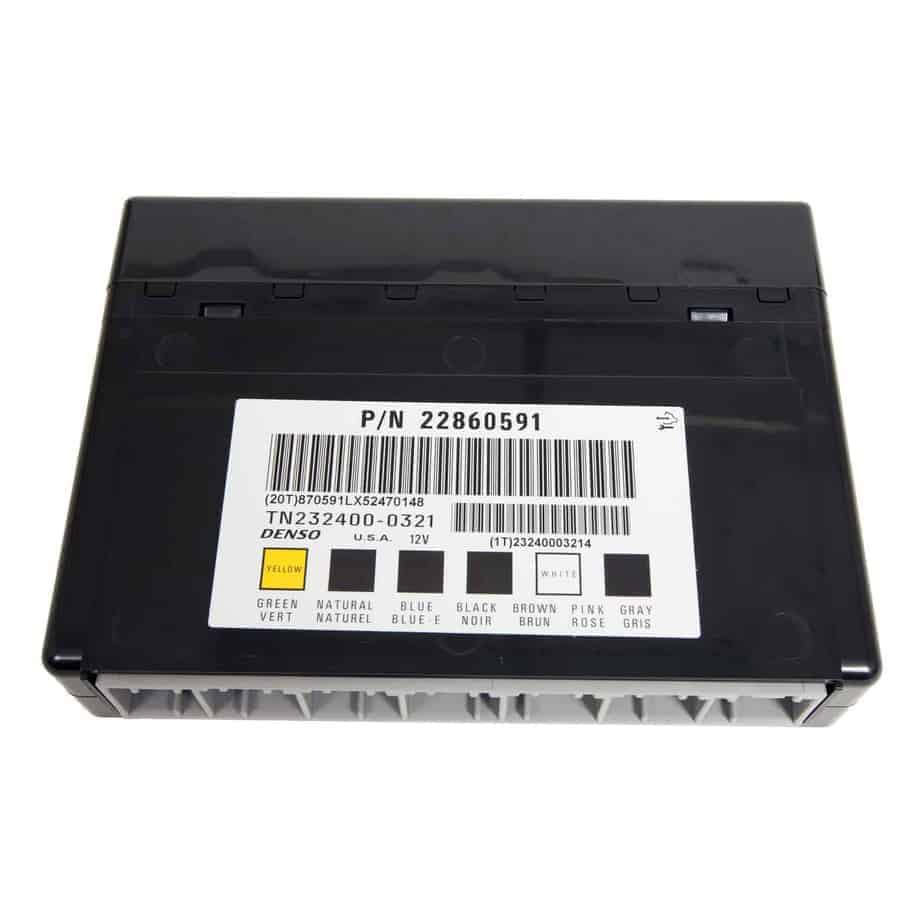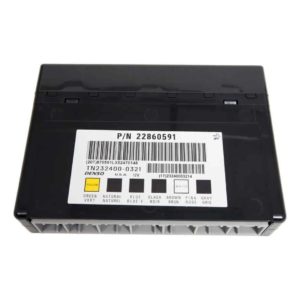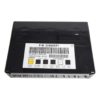Restore Your Cadillac’s Electrical System and End the Frustration
Are you dealing with bizarre electrical issues in your Cadillac DTS? Flickering dashboard lights, power windows with a mind of their own, or a security system that prevents your car from starting can be incredibly frustrating. These aren’t just annoyances; they’re classic signs of a failing Body Control Module (BCM). The BCM is the central command center for your vehicle’s body electronics, and when it falters, it can create a cascade of confusing problems. This isn’t a component you can ignore. We offer a direct-fit, reliable solution with this 2006-2011 DTS Body Control Module, delivered to your door already programmed and ready for installation.
A Technician’s Notebook: The DTS with a Ghost in the Machine
A customer brought in his 2008 Cadillac DTS last month, completely fed up. The interior lights would pulse randomly, the radio would shut off, and occasionally, the car just wouldn’t start, showing a “Service Theft System” message. He’d already replaced the battery and checked the grounds. After connecting my scan tool, I saw multiple communication loss codes with various modules. In my 20+ years of experience, this pattern almost always points to one culprit: the BCM. Internal corrosion, often from moisture exposure, had compromised the circuit board. We installed one of our VIN-programmed BCMs, performed the necessary key relearn and airbag check, and the car’s electrical gremlins vanished. It’s a common failure, but with the right part, it’s a straightforward fix.
Common Signs of a Failing BCM
- ✔ Intermittent or non-functional power windows, door locks, or interior lights.
- ✔ Erratic or inaccurate gauge readings on the instrument cluster.
- ✔ The security or anti-theft system activating incorrectly, causing a no-start condition.
- ✔ Dashboard warning lights (like ABS or Airbag) staying on without a clear cause.
- ✔ Communication errors with diagnostic scan tools.
- ✔ Complete loss of power to multiple accessory systems at once.
A Straightforward Guide to Your BCM Installation
Replacing the BCM in your DTS is manageable for a confident DIYer. The module is typically located behind the right-hand side of the dashboard. Always consult a vehicle-specific repair manual for exact location and torque specs.
- Safety First: Disconnect the negative terminal from your vehicle’s battery and wait at least 10 minutes to allow all systems to power down completely.
- Access the Module: Carefully remove the necessary dash panels or glove box assembly to gain clear access to the old BCM. The location is specified as the right-hand center dash area for the DTS.
- Disconnect and Remove: Unplug the electrical connectors from the old BCM. They have locking tabs that need to be depressed. Once disconnected, unbolt the module from its mounting bracket and remove it from the vehicle.
- Install the New BCM: Mount your new, pre-programmed BCM onto the bracket and securely fasten it. Reconnect all electrical connectors, ensuring they click firmly into place.
- Perform Post-Installation Procedures: Reconnect the battery. You will need to perform a security relearn procedure (often called a Passlock or Passkey relearn) to allow the vehicle to start. This typically involves cycling the key in the ignition.
- Final System Checks: After the relearn, you must address any remaining warning lights as detailed below. Test all body functions—windows, locks, lights, wipers—to confirm proper operation.
Important: Post-Installation Requirements
After installing your new 2006-2011 DTS Body Control Module, a few critical steps are required to ensure full system functionality and safety. These procedures often require a professional-grade diagnostic tool.
- Airbag System Reset: If the airbag warning light is on, you must perform the ‘Setup SDM Primary Key in BCM’ procedure. This re-establishes communication between the BCM and the Sensing and Diagnostic Module (SDM), ensuring the airbag system is operational.
- Brake Pedal Position Sensor Calibration: Some vehicles require the Brake Pedal Position (BPP) sensor to be recalibrated after a BCM replacement. This is crucial for proper brake light operation and stability control system function.
Will This Fit My Vehicle?
This BCM is a direct replacement for part number 15921352 and interchanges with a wide range of other GM part numbers. It is guaranteed to fit the following models, but please verify your original part number to ensure compatibility.
Chevrolet: Equinox (2007-09), Impala (2006-13), Monte Carlo (2006-07), Traverse (2009-12), Tahoe/Suburban/Avalanche (2010 with specific IDs), Express Van (2008-12), Captiva Sport (2012), Caprice (2011-13)
GMC: Acadia (2007-12), Yukon/Yukon XL (2010 with specific IDs), Savana Van (2008-12)
Buick: Lucerne (2006-11), Enclave (2008-12)
Pontiac: Torrent (2007-09), G8 (2008-09)
Saturn: Outlook (2007-10), Vue (2008-10)
Hummer: H2 (2008-09)
This module replaces the following part numbers: 10382479, 15093910, 15276271, 15299986, 15819552, 15828601, 15837419, 15872388, 15872421, 15880684, 15921352, 15921353, 15948438, 15948439, 20815898, 20839063, 20864767, 20864768, 20921435, 20921436, 20935349, 22860591, 25826124, 25826125, 25847588, 25847589, 25892622, 25910474, 25934762, 25934763, 95151084.
Frequently Asked Questions
Do I need to do any programming myself?
No. We handle the programming for you. Simply provide your vehicle’s 17-digit VIN during checkout, and we will flash the module with the latest GM software specific to your car before shipping it. This saves you a trip to the dealer.
What is a security relearn and is it difficult?
A security relearn synchronizes the new BCM with your vehicle’s anti-theft system. For most GM vehicles, it’s a simple procedure that involves turning the key to the ‘ON’ position for 10-12 minutes, then ‘OFF’ for 30 seconds, and repeating this cycle three times. Your vehicle’s manual will have the precise steps.
Will this fix my ‘Service Theft System’ message?
In many cases, yes. A faulty BCM is a very common cause of this error message and the resulting no-start condition. Replacing it with this programmed module is the correct repair for that failure.
Is this a new or used part?
This is a high-quality, inspected, and tested used OEM part. We ensure it meets or exceeds original performance standards and back it with our guarantee. It is programmed with fresh, updated software from GM.
What happens if I don’t do the airbag or brake calibration?
Skipping these steps can leave critical safety systems inoperative. The airbag warning light will likely remain on, meaning the airbags may not deploy in an accident. Incorrect brake sensor data can affect ABS and traction control performance. We strongly recommend having these procedures done by a qualified technician if you don’t have the proper tools.


